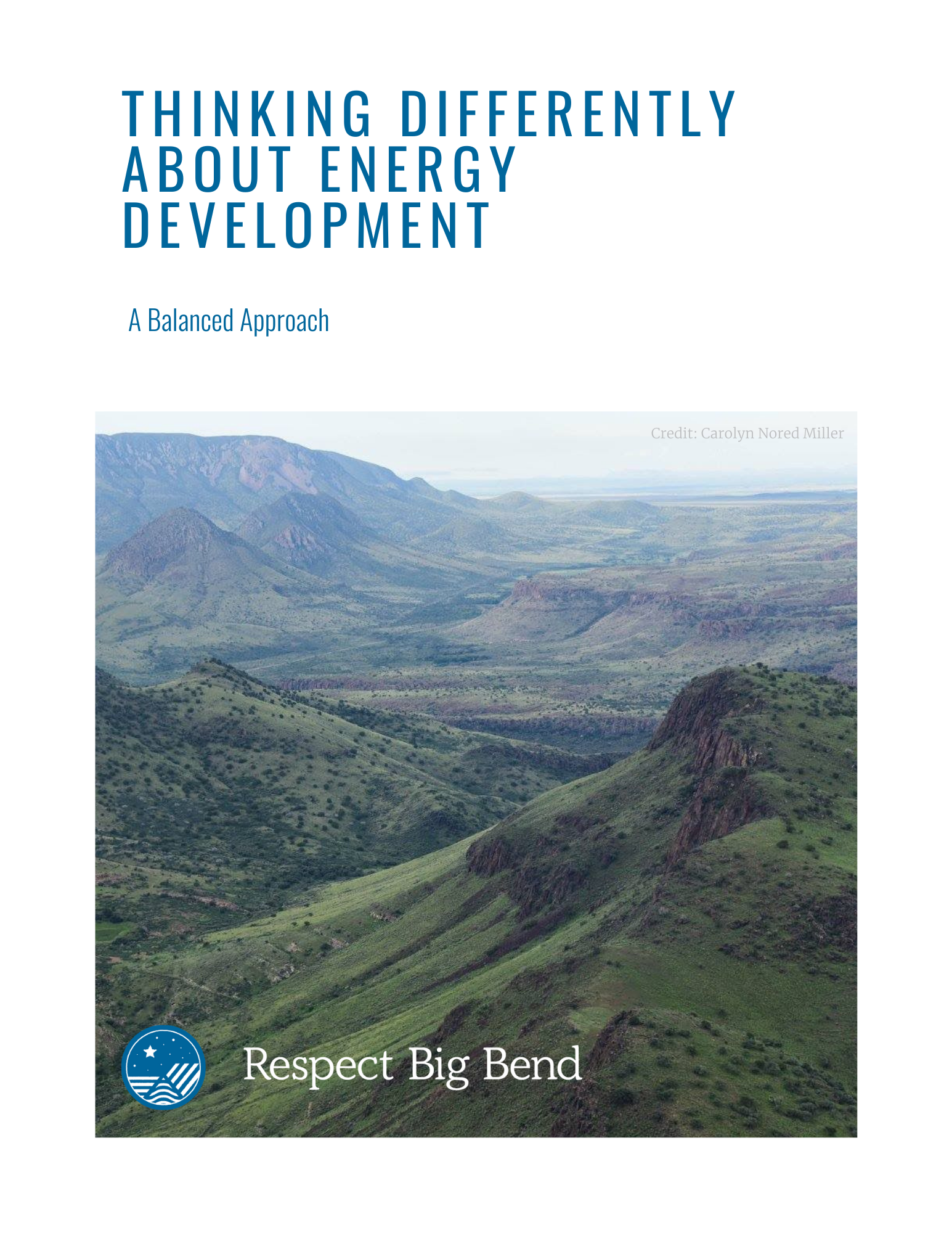Results of Respect Big Bend’s Efforts in Far West Texas
A Note from the Cynthia and George Mitchell Foundation:
The Cynthia and George Mitchell Foundation (CGMF) is a philanthropic organization focused on fundamental change in complex systems critical to achieving a sustainable society. The foundation’s programs promote clean energy, land protection, water conservation and shale sustainability. These interrelated resource issues pose challenging inconsistencies and demand trade-offs in a rigorous analysis of optimal energy systems. Is the relatively poor energy density (the unit of land needed to produce a unit of energy) of renewables worth the carbon savings from displacing coal or natural gas? Are the water savings from wind and solar development worth the loss of land and soil resources? How do you balance the jobs created today by the shale industry with the threat of climate change tomorrow? These questions are a good reminder that there are no impact-free energy resources.
I believe there is a better way for energy development to happen – in West Texas and beyond. It can be done in a way that engages and protects communities and natural resources.
The hypothesis we investigated in this project has its origins in a CGMF collaboration with the the Aspen Institute’s Energy and Environment Program. Together we convened subject matter experts to develop recommendations to improve the regulatory context for managing risk in the governance of oil and gas development from shale resources, particularly through enhanced stakeholder engagement practices. Over the course of the Aspen Institute collaboration, growing renewables and shale development in the Big Bend Region afforded us a real world opportunity to test the new governance approach.
Besides growing up in the Permian Basin, the Big Bend holds profound personal meaning for me. I grew concerned about the impacts of development on the habitat and beauty of the area while reading news articles about major new renewables projects and shale discoveries slated for development. Understanding the potential impact on landowners, scarce water resources and small communities, we set out on a project to engage stakeholders and empower local communities to conserve what matters most to them, whatever that might be.
This is how Respect Big Bend came to be. The goals are simple: protect, mitigate, restore and set a precedent, creating a model for energy development that transcends the status quo.
Where energy development is minimal, before many leases have been signed, we would work to establish a process that gives landowners and community members a voice in protecting their communities, land and water resources.
Where leases have already been signed, we would work with landowners and the energy industry to mitigate the impact of energy development on the communities, land and water of the region.
Where energy development has already taken hold, we would work with landowners and the energy industry – both fossil and renewables developers – to establish high standards for the restoration and enhancement of communities and land impacted by energy development.
Last, and maybe most important for the future of Texas and other undeveloped areas, we would document our effort, both achievements and setbacks, so that others will benefit from what we learn in the greater Big Bend Region.
The major outputs from the Respect Big Bend program include novel ecological asset mapping techniques and energy forecasts, values-based recommendations from local stakeholders and a framework for encouraging low-impact energy development. Together these outputs clarify and improve the chances for responsible energy development that protects regional ecosystem and cultural values today and in the future.
I am both personally and, as a representative of the Cynthia and George Mitchell Foundation, professionally delighted to have supported the Respect Big Bend project and resulting report. Taken together, these endeavors provide useful insights to those interested in continuing to improve the performance of energy development of any type anywhere, especially regarding habitat and community protection.
I thank all those involved for their valuable input throughout this process and look forward to utilizing this report as a valuable resource.
Marilu Hastings
Chief Innovation Officer, Cynthia and George Mitchell Foundation















